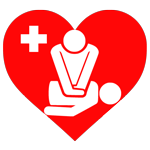What to Expect in a CPR Class: Preparing for Your First Session

Getting Ready to Learn Life-Saving Skills
Overview
Introduction and Objectives
The class will start with an introduction from the instructor, outlining the goals and objectives of the course. You’ll learn about the importance of CPR, the basics of how it works, and why it’s essential to act quickly in an emergency.
Basic Anatomy and Physiology
You’ll receive a brief overview of the heart, lungs, and how they work together to supply oxygen to the body. Understanding the basic anatomy and physiology will help you grasp the importance of proper CPR technique.
CPR Techniques
The core of the class will focus on teaching you the proper techniques for performing CPR. This includes chest compressions, rescue breaths, and the use of Automated External Defibrillators (AEDs).
Hands-On Practice
Skill Stations
You’ll participate in skill stations where you’ll practice CPR techniques on manikins. This hands-on practice is crucial for building muscle memory and confidence. You’ll learn how to position your hands, the depth and rate of compressions, and how to give effective rescue breaths.
Using an AED
The instructor will demonstrate how to use an AED, and you’ll have the opportunity to practice with a training device. Understanding how to operate an AED is a critical component of effective CPR.
Feedback and Correction
Instructors will provide real-time feedback and corrections to ensure you’re performing the techniques correctly. Don’t be afraid to ask questions or request additional practice if needed.
Additional Skills
Choking Relief
The class will also cover how to assist someone who is choking. You’ll learn the Heimlich maneuver for adults and children, as well as techniques for infants.
Scenario Practice
You’ll participate in simulated emergency scenarios to practice applying your CPR skills in a realistic setting. This helps prepare you for the pressure and urgency of a real-life situation.
Certification and Assessment
Knowledge Test
Most CPR classes include a written test to assess your understanding of the concepts covered. This typically includes multiple-choice questions about CPR techniques, AED usage, and emergency response procedures.
Skills Test
You’ll be evaluated on your ability to perform CPR and use an AED correctly. The instructor will observe and grade your performance to ensure you meet the certification standards.
Certification
Upon successful completion of the course, you’ll receive a CPR certification card from the certifying organization, such as the American Heart Association or the American Red Cross. This certification is usually valid for two years.
Preparing for Your First CPR Class
What to Wear
Dress comfortably in clothing that allows for easy movement. You’ll be kneeling and performing physical tasks, so wear something that won’t restrict your movement.
What to Bring
Bring a notebook and pen for taking notes, and a water bottle to stay hydrated. If you have any medical conditions or physical limitations, inform the instructor before the class begins.
Mindset
Approach the class with an open mind and a willingness to learn. CPR training can be intense, but it’s incredibly rewarding to know you’re gaining skills that could save a life.
Conclusion
Attending your first CPR class is a significant step toward becoming a capable and confident responder in emergency situations. By understanding what to expect and how to prepare, you can make the most of your training experience. Remember, the skills you learn in a CPR class can make a life-saving difference when it matters most.
Visit our blog for the latest articles, reviews, expert tips, and essential life saving skills.
#CPRTraining #FirstCPRClass #LifeSavingSkills



Leave a Reply